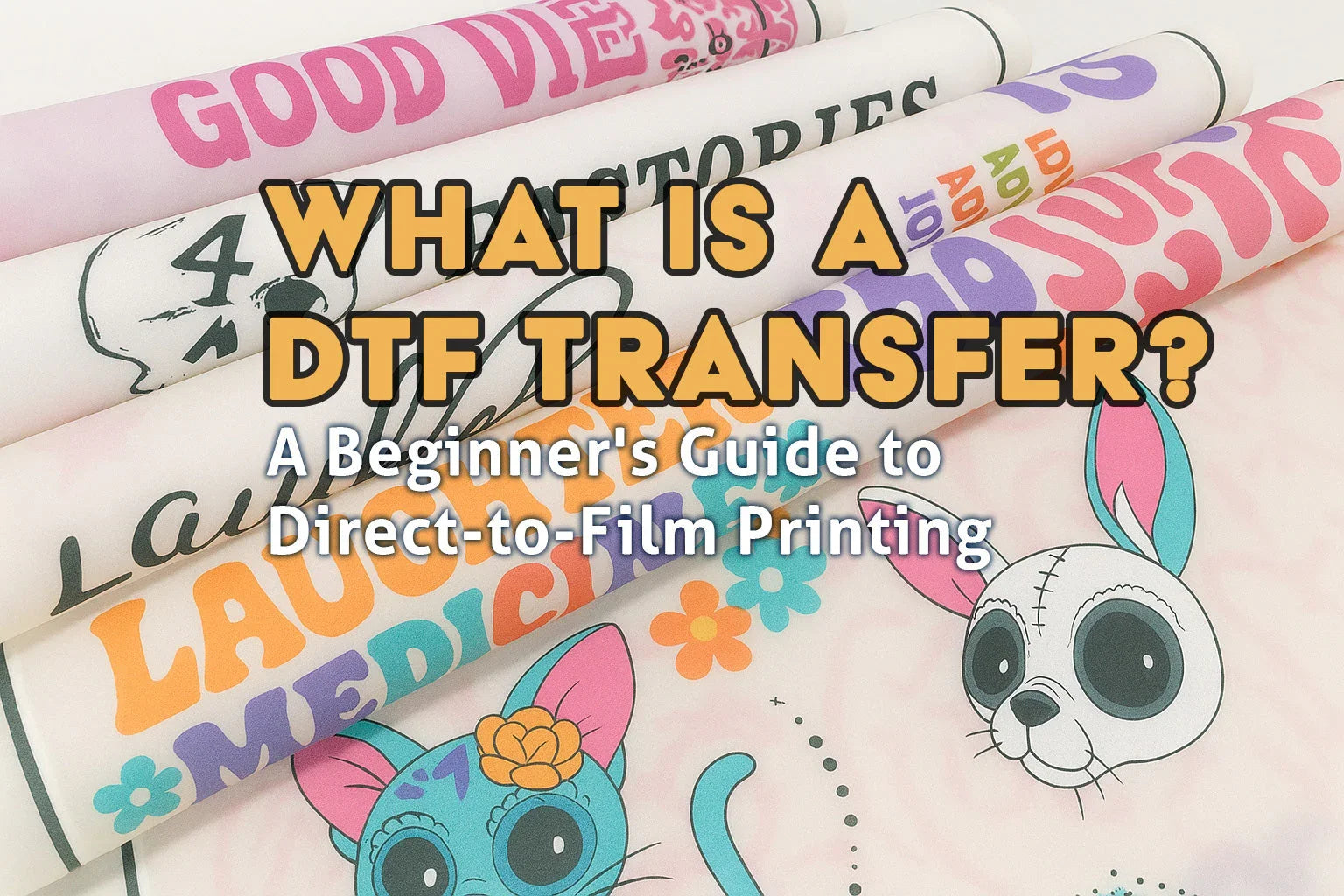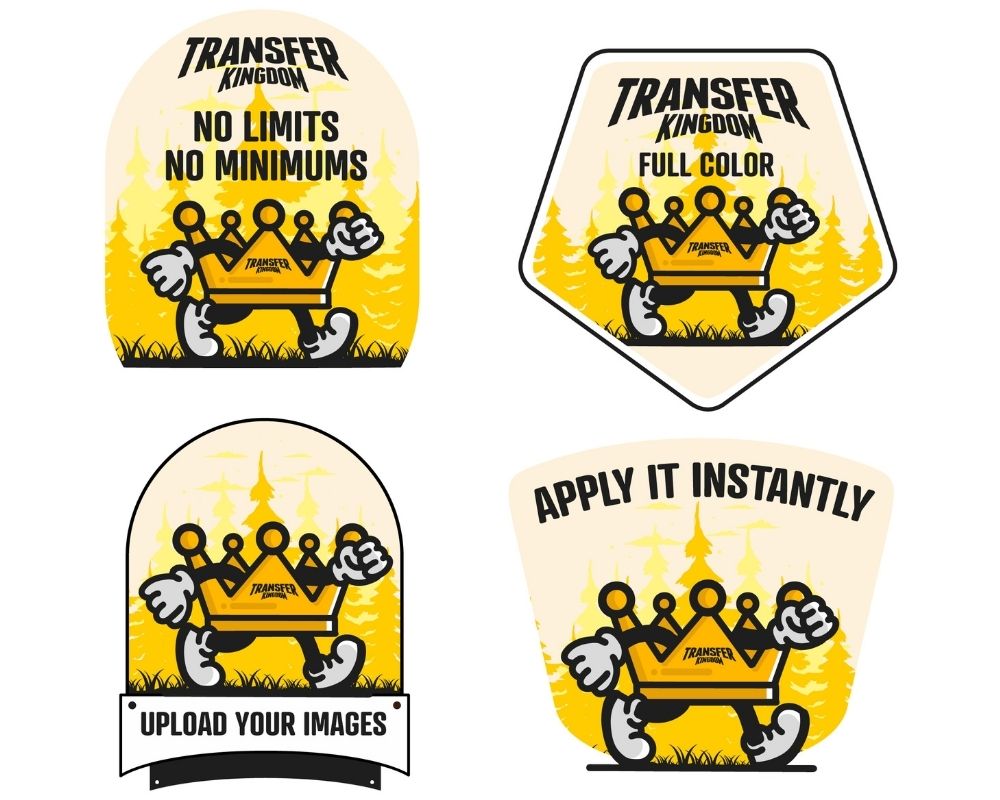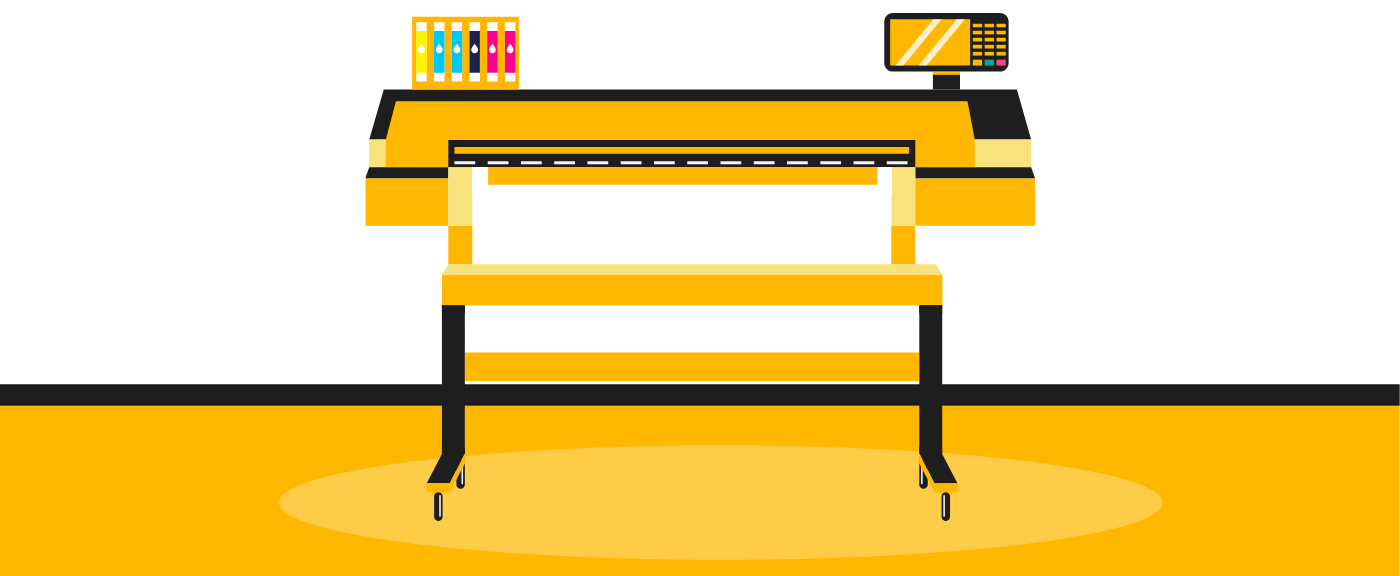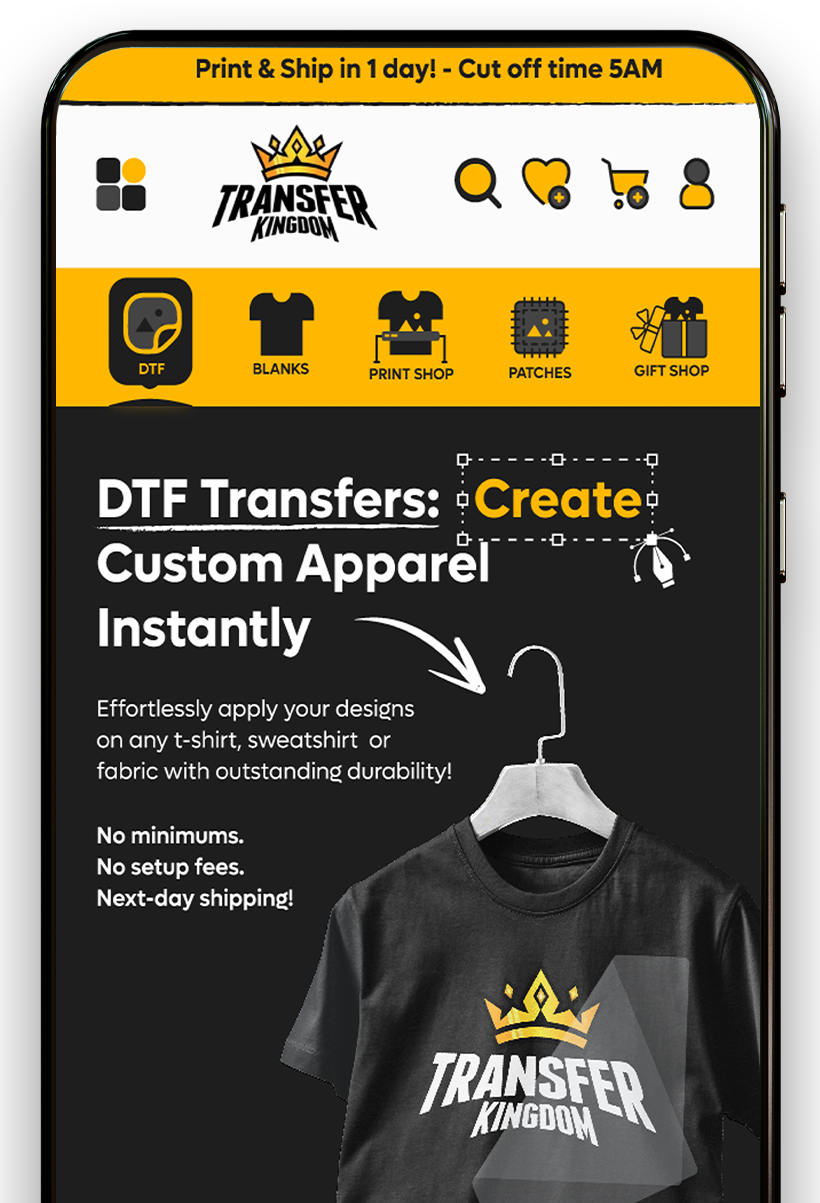What is a DTF Transfer? A Beginner's Guide to Direct-to-Film Printing

Table of Contents
Introduction
One of the latest wonders of technology, direct-to-film (DTF) transfers, has gained considerable popularity recently and is frequently used in printed t-shirts and sweatshirts. In this article, we answer the question "What is a DTF Transfer?" for those curious about the DTF method and explain the entire Direct to Film technology with its main features.
What is DTF?: DTF Transfer Meaning
Direct-to-film (DTF) is a textile printing method involving direct printing of your designs onto a specialized film, followed by heat transfer to an object or typically a fabric.
The film that has the printed design on it is the DTF transfer. You can then apply this DTF transfer sheet to the fabric material using a heat press. DTF transfers can be applied to a variety of types of garment types:
- T-shirts
- Hoodies
- Blouses
- Bags
- Backpacks
- Jerseys
- Masks
- Tote bags
You can apply on a variety of fabrics as well like cotton, silk, polyester, linen, and leather, to name a few.
What are the Advantages of DTF transfers?
DTF transfer differs from other traditional transfer methods with its numerous features.
DTF printers have the following characteristics:
- Sharp: DTF transfers use specially designed ink to produce sharp, detailed, and high-resolution prints.
- Durable: The inks used for DTF transfers are rubberized so it allows for awesome durability.
- Compatibility: Unlike other methods like sublimation, which is only limited to polyester blends. DTF transfers are compatible with a wide range of materials.
- Lower Costs: Though there will be upfront costs in starting any business, DTF transfers have overall lower costs in the long run. This is the method that also scales the best to fulfill more orders.
What Are The Disadvantages of DTF Transfers?
Limited to CMYK colors: DTF printers rely on the CMYK color model and can only use four primary colors. Unlike traditional printing methods, you do not have the freedom to use any color you desire.
Impact of design size on fabric drape: Printing a large design on a fabric can affect its flexibility and drape. To maintain the fabric’s natural movement, you may prefer using smaller prints for your shirts and sweats.
Altered fabric texture: DTF prints can sometimes alter the texture of the fabric. Particularly with larger prints, the printer era may feel stiffer compared to the rest of it.
How To Print and Use DTF Transfers?
DTF printing is a highly enjoyable process for both businesses and individual use. During DTF transfer, there are certain points that need to be considered. By executing the printing steps properly and paying attention to the details while using your DTF transfer printer, you can achieve high-quality results.
The general steps to prepare for DTF printing are as follows:
- Firstly, you need to decide on the surface on which you will be printing and create a suitable design for that surface. You can either draw your own design digitally or use a pre-made design.
- Next, you need to feed your design into the DTF printer. The DTF printer uses inkjet technology to transfer the design onto a PET film.
- During the transfer process, the PET film, onto which ink is sprayed, is placed onto the surface where the printing will be done. It's important to ensure that the chosen PET film is suitable for DTF printing.
- The transfer process is carried out using heat and pressure. Once the PET film is placed onto the material, the applied heat and pressure allow the ink to pass through the PET film and onto the material.
- Please note that the DTF printing process may involve additional steps and considerations depending on the specific equipment and materials being used.
- During the transfer, apply medium pressure at 320°F/160°C for 15 seconds.
- After a 15-second cooling period, you can remove the transfer film from the shirt.
- Let the shirt cool down for 15 seconds. Then, apply heat again for 15 seconds using the provided parchment paper.
What you’ll need for DTF transfers?
DTF Printers:
Understanding your printers well will help you achieve better results in DTF transfers. Therefore, it is important to have knowledge about the features of your DTF printers. Taking a closer look at these printers also allows you to better understand the differences between traditional printing methods and DTF printing methods.
DTF printers are equipped with colored ink tanks and operate using CMYK settings. The ink used in these printers is specifically designed for this principle of operation. With DTF printers, you can easily achieve the desired print because they are known for their superior print quality, and the application process is also quite straightforward.
PET Films:
PET films are used in DTF printers. These films, with a thickness of 0.75mm, are excellent materials that effectively transfer your designs onto products after applying heat and pressure. They are also known as DTF transfer films. When purchasing PET films, you can find them in small sheets for individual use or in large rolls for business purposes, allowing you to choose the most suitable PET film for your operations.
Inks:
DTF printers utilize specially designed DTF inks, which are the best option for your prints.
Product:
You need a product to perform DTF printing. In the first step, you should determine the product you want to print on. Various textile products such as t-shirts, masks, bags, or other suitable materials can be chosen.
Heat Press:
You require a heat press to perform DTF printing. The heat press is used to transfer the designs on the PET films onto the desired surface for printing. Heat and pressure facilitate the transfer process.
Design:
You can use ready-made designs or create custom designs in a digital environment using design software. Transfer your design to the DTF printer to perform the printing.
Want to Get Started?
Feeling motivated? Great! It's time to do something. For those eager to begin but unsure where to start, why not check out Transfer Kingdom's DTF transfer sample pack? It's a fantastic way to learn about the process and see for yourself how simple it is to use DTF transfers.





